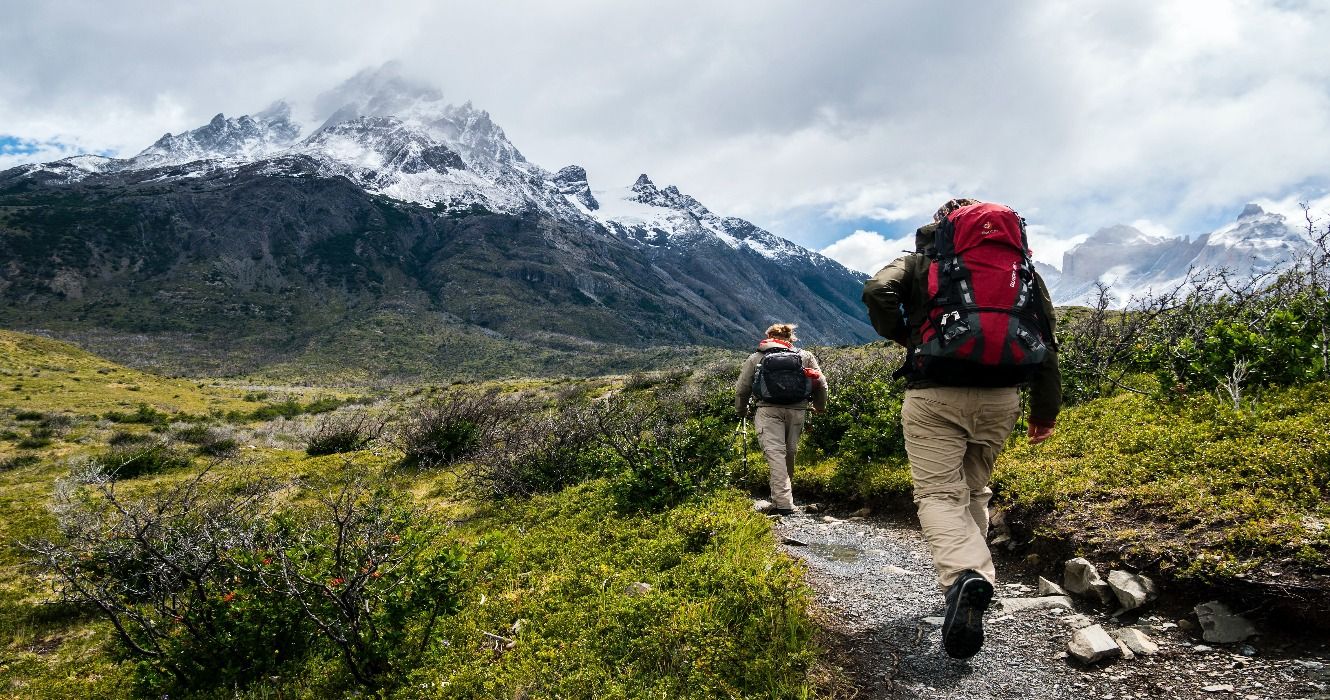Backpacking through the wilderness around the world is an incredible experience. From the many stunning things to do and see amid the glacial lakes of Patagonia to the snowcapped peaks of Nepal, which are prime for trekking, backpacking on a multi-day adventure is rewarding in both scenery and physical endurance. While it’s a fun venture, it’s not one to undertake lightly; backpacking in the great outdoors requires adequate preparation, the proper gear, and analytical decision-making skills. With that in mind, here are ten tips for staying safe and comfortable on a backpacking trip through the wilderness.
10 Break-In Those Hiking Boots Before Departure
One of the top ways to stay comfortable while on a multi-day trek is to wear hiking boots that are already broken in. That means travelers should purchase their boots or shoes well in advance of their wilderness backpacking adventure and wear them on hikes and walks at home several times before they live in them for days at a time. Taking the time to break in hiking boots ensures they are comfortable, they fit properly, and they won’t leave blisters on backpackers' feet during the trek.
9 Bring Trekking Poles
Trekking poles are a valuable addition to the gear list when tackling a multi-day hike with any sort of elevation gain. Some of the most popular hikes around the world, such as the W-Circuit in Patagonia, the Inca Trail to Machu Picchu in Peru, and the Everest Base Camp Trek in Nepal, all require hikers to ascend at least a couple of thousand meters over the course of the trek. This means that they'll also be going downhill at some point, which can be extremely hard on the knees. Using trekking poles on the descent can relieve some of that pressure on the joints.
8 Practice “Dirty Layering”
As described by YouTube hiking sensation Kraig Adams, “dirty layering” is the concept that of being okay with being unclean while on the trail in exchange for lightening the load in the backpack. This means backpackers should bring fewer clothes (essentially only what they're wearing plus a jacket or two) and remove or add these layers throughout the trek. But, because travelers are wearing basically the same few garments of clothing each day, they get sweaty and dirty. Those who are okay with this style of hiking can carry less weight making the hike more comfortable.
7 Invest In A Mattress Pad
Any multi-day hike where backpackers are sleeping in tents can quickly become uncomfortable without a mattress pad beneath the sleeping bag. The pad provides some cushion on the hips during the night and can also act as insulation in cooler temperatures. Travelers should be sure to research the various options on the market for a comfortable mattress pad that is also compact and can fit in their pack. Therm-a-Rests come in a variety of styles and prices and are inflatable mattress pads that can easily be stored in a backpack between uses.
6 Limit The Weight Of Everything In The Pack
When packing a bag for a multi-day backpacking trip, travelers should consider the weight of every item, including the backpack itself. Think of how much each extra pound adds to the load. An extra pound from each item, like the sleeping bag, tent, backpack, mattress pad, and food supply, amounts to six extra pounds carried for several hours a day. Shaving off even half a pound on each item makes the hike more enjoyable, so search for products that are designed to be lightweight.
5 Bring A Pillow
It might be tempting to skip out on bringing a pillow to reserve space in a bag and lighten the load, but using a jacket as a headrest for multiple nights can take a toll on the neck. Instead, bring an inflatable pillow with adequate support. These are available in many varieties and are highly compact when deflated.
4 Invest In Sunproof Clothing
Don’t underestimate the sun when outdoors on the trail for hours at a time. Everything from the back of the neck to the tops of the hands is vulnerable to sunburns. While reapplying sunscreen regularly is advisable, it often isn’t enough. Cover as much of the body as possible with sunproof clothing like an alpaca sun hoodie or a hat that offers UV protection.
3 Wear Merino Wool Socks (Never Cotton)
The socks worn on a backpacking trip through the wilderness have a profound impact on people's comfort levels. Cotton socks that are used in daily life are not a suitable choice for hiking because they can become damp from the environment or sweat and then, absorbing the moisture, make the feet wet and cold for hours at a time. In contrast, merino wool regulates the body's temperature, so it’s more adaptable to whatever climate backpackers may be hiking in. The fibers of the wool also store moisture until it evaporates at warmer temperatures. This keeps the feet comfortable and dry for the duration of the hike.
2 Have A Water Bottle With A Filter
Carrying clean water for the duration of the trek isn’t always possible, depending on how many days backpackers are planning to be on the trail. To eliminate the need to do so, travelers should invest in a water bottle with a high-quality filter, so they can fill up water at streams, lakes, or rivers along the way. There are plenty of excellent products on the market today that are capable of filtering out bacteria, heavy metals, chlorine, and other chemicals, enabling travelers to drink from any water source safely.
1 Carry First-Aid Essentials
Expect the unexpected on a backpacking trip and travel with a compact first-aid kit. Accidents happen, and oneself or someone else in the group may fall, twist an ankle, or get a bug bite during the hike. Bring a first-aid kit with necessary supplies like bandages, antiseptic wipes, antibiotic ointments like POLYSPORIN, and an antihistamine.

